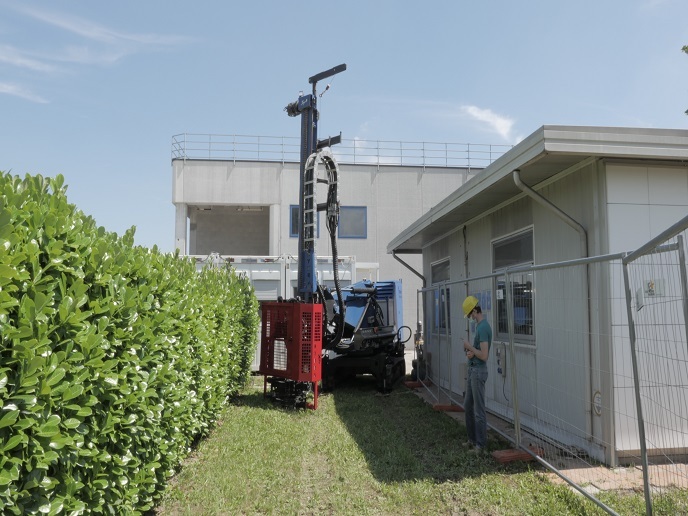Mobilising the heat below our feet to energise historical buildings
Shallow geothermal heating and cooling systems are beginning to look more like attractive contenders for upgrading Europe’s ageing building stock. EU initiatives, including the Renovation Wave, and policy measures such as the revision of the Energy Performance of Buildings Directive are spearheading this change. However, historical buildings have their own restrictions limiting them from using this completely renewable energy source. The EU-funded GEO4CIVHIC project has developed and modified existing technologies to accelerate the deployment of shallow geothermal heating and cooling in such buildings located in built-up areas. “On average, a geothermal system can supply 4 kW of thermal energy to the building by using 1 kW of electrical energy and extracting 3 kW of free energy from underground,” notes Adriana Bernardi, project coordinator, physicist, research director and head of National Research Council's Institute of Atmospheric Sciences and Climate, Padua, Italy.
Drilling and operating in a restricted space
A borehole heat exchanger coupled to a heat pump extracts the Earth’s inexhaustible heat and supplies this energy to the emission units or radiators. Heat exchangers extract energy from the soil up to 8 °C, and the heat pump ‘lifts’ this energy to temperatures of up to 60 - 70 °C to supply the heating system. In summer, the heat pump reverses and draws heat from the building recharging the soil. “Radically new approaches to drilling the borehole increase heat pump efficiency for high temperatures, and new types of refrigerants are required,” Bernardi explains. The historic city of Mechelen in Belgium boasts some 300 listed buildings. GEO4CIVHIC developed a compact and reduced-weight drill rig with a very small footprint that could be hoisted into gardens with a crane around these quaint narrow streets. GEO4CIVHIC optimised and installed several co-axial steel heat exchangers with up to 20-30 % higher energy extraction rates, reducing the total length of heat exchangers needed. These heat exchangers were patented in the Cheap-GSHPs Horizon 2020 project.
Variations across the demo sites Europe-wide
Three pilot and four demonstration sites show the extent of GEO4CIVHIC’s success across a range of rocks in the Earth’s crust and different building designs. Three heat pumps using CO2 as a more environmentally friendly refrigerant were developed for high-temperature emission systems. In Ferrara (Italy), Greystones (Ireland) and Mechelen (Belgium), these demonstrated coefficients of performance up to 3.3 at temperatures of 60 - 70 °C. One dual-source (air/ground) heat pump is installed in a historical site in Malta for warm climate applications. Additionally, four compact plug-and-play heat pumps were integrated into the test facilities at the University of Padua, Italy, and at Tecnalia, Bilbao, Spain, to develop energy management apps and study new low global warming potential refrigerants. Bernardi points out: “These developments include the use of new refrigerants with low global warming potential to respond to the upcoming legislation.” For drilling in hard rock, GEO4CIVHIC developed a compact, powerful roto-vibrating drill head. In Ireland, the demo case at Greystones is on compacted rock, so the team used compressed air as the drilling fluid. Compressed air consumption and drill bit wear were substantially lower compared to the conventional drilling method. In softer rock on Malta, at the Msida Bastion Historic Garden, water was used as drilling fluid and drilling was very fast, although at rates below 1 m/min.
The future for geothermal energy
GEO4CIVHIC comprehensive drillability maps will characterise sites according to geological properties, complete with drilling rates and costs. “For integration of geothermal plants with other renewable sources, we are developing a decision-support system. This will help users improve overall energy efficiency and accelerate the return on investment,” Bernardi emphasises. Bernardi’s vision for Europe’s historical building stock involves “demonstrating to all stakeholders the long-term economic returns of shallow geothermal heating and cooling. Activities we plan for training, guidelines and workshops will contribute to increasing the awareness and confidence in this technology amongst the stakeholders,” she concludes.
Keywords
GEO4CIVHIC, heat pump, historical building, refrigerant, shallow geothermal energy, heating and cooling, drilling, borehole, renewable sources



